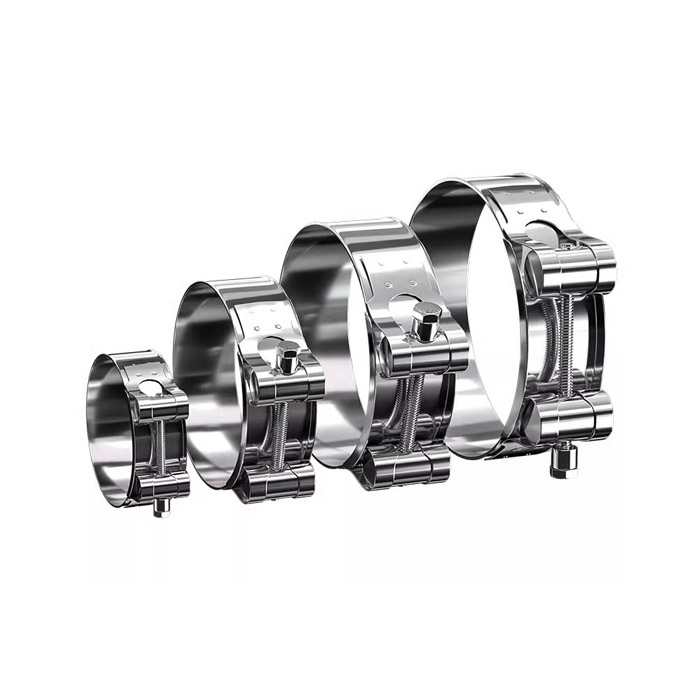- Phone:+86-17331948172 +86-0319-8862898
- E-mail: inquiry@puxingclamp.com
Oct . 01, 2024 15:04 Back to list
Hose Clamps for Secure Connections on Barbed Fittings in Manufacturing Facilities
The Importance of Hose Clamps on Barbed Fittings A Comprehensive Overview
In various industries, from automotive to agricultural applications, the use of barbed fittings in conjunction with hose clamps is integral to ensuring robust connections in fluid systems. Barbed fittings are designed with protruding ridges that create a mechanical interlock with the hose, preventing it from slipping off due to fluid pressure. However, the addition of hose clamps plays a crucial role in enhancing the reliability and safety of these connections. This article evaluates the importance of hose clamps on barbed fittings and the impact of manufacturing processes in factories that specialize in these components.
Understanding Barbed Fittings
Barbed fittings are widely utilized in applications that require the transfer of liquids or gases. Their design allows for easy installation and a secure fit. Typically, these fittings can be made from various materials, including plastic, brass, and stainless steel, catering to different environmental conditions and pressures. However, while barbed fittings provide basic retention due to their shape, they may not be sufficient to withstand high pressures or dynamic movements without additional security measures.
The Role of Hose Clamps
Hose clamps are devices that encircle a hose and secure it to a fitting. These clamps come in various forms, including worm gear clamps, spring clamps, and T-bolt clamps, each serving unique purposes depending on the specific requirements of the application. The primary function of hose clamps is to apply compressive force to the hose, ensuring a tight fit against the barbed fitting and preventing leaks. This is critical not only for maintaining the efficiency of fluid transport but also for avoiding potential hazards like fluid spillage or pressure loss, which can have serious implications for safety and operational efficiency.
Manufacturing of Hose Clamps
hose clamps on barbed fittings factories

Factories that produce hose clamps must adhere to strict quality control standards. The manufacturing process involves several steps, including material selection, machining, heat treatment, and surface finishing. The choice of material is paramount as it dictates the strength, flexibility, and corrosion resistance of the clamp. Stainless steel, for instance, is favored for its durability and resistance to rust, making it ideal for use in humid or corrosive environments.
Once the raw materials are selected, they undergo precise machining to create the clamp’s components. This includes cutting, bending, and forming to meet specified dimensions. Automated machinery is often utilized for these processes to ensure consistency and reduce the likelihood of human error. After the clamps are formed, they may undergo heat treatment to enhance their mechanical properties and ensure they can withstand various environmental stresses. Finally, surface treatments are applied to provide additional protection against corrosion and wear.
Quality Control and Testing
Quality assurance is a critical aspect of hose clamp manufacturing. Factories typically implement rigorous testing procedures to evaluate the clamps' performance under different pressures and conditions. This can include hydrostatic testing, where clamps are subjected to pressure to ensure they maintain their integrity without slipping or leaking. Additional assessments may cover corrosion resistance, thermal stability, and operational lifespan. Such meticulous attention to detail not only guarantees the product's reliability but also enhances the factory's reputation in a competitive market.
Conclusion
In conclusion, hose clamps are indispensable companions to barbed fittings across various industrial applications. They enhance the reliability of fluid connections, ensuring that operations run smoothly and safely. Understanding the importance of hose clamps and the intricate manufacturing processes involved in their production is essential for professionals in relevant industries. This knowledge not only informs better purchasing decisions but also emphasizes the significance of quality control in ensuring long-lasting and effective connections in fluid transport systems. As technology and materials continue to evolve, the future of hose clamps and barbed fittings looks promising, paving the way for even more efficient and reliable systems in diverse applications.
-
Large Stainless Steel Adjustable American Type Hose Clamp - Hebei Pux Alloy | Corrosion Resistance, Adjustable Design
NewsAug.03,2025
-
Large Stainless Steel Adjustable American Type Hose Clamp - Hebei Pux Alloy Technology Co., Ltd | Corrosion Resistance, Adjustable Design
NewsAug.03,2025
-
Premium Stainless Steel Strip Coil | Durable & Rust-Resistant
NewsAug.03,2025
-
Large Stainless Steel Adjustable American Type Hose Clamp - Hebei Pux Alloy Technology Co., Ltd
NewsAug.03,2025
-
Large Stainless Steel Adjustable American Type Hose Clamp - Hebei Pux Alloy Technology Co., Ltd
NewsAug.02,2025
-
Large Stainless Steel Adjustable American Type Hose Clamp - Hebei Pux Alloy Technology Co., Ltd
NewsAug.02,2025




